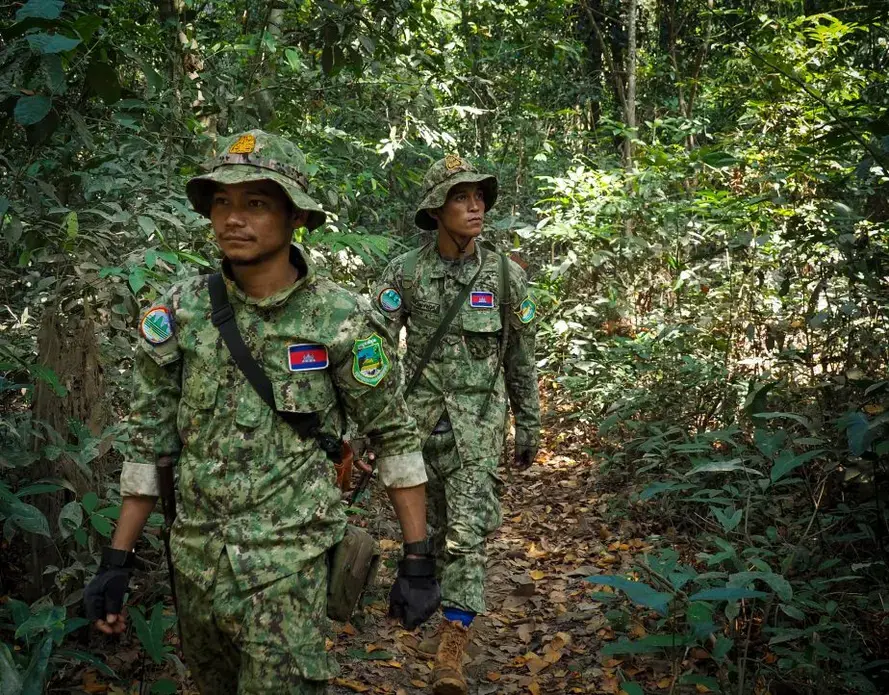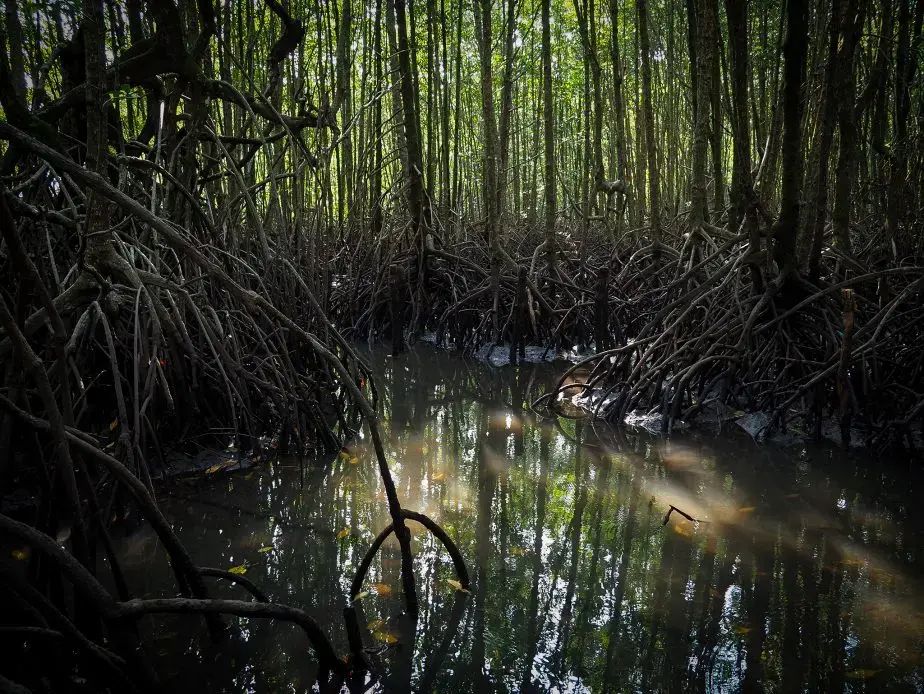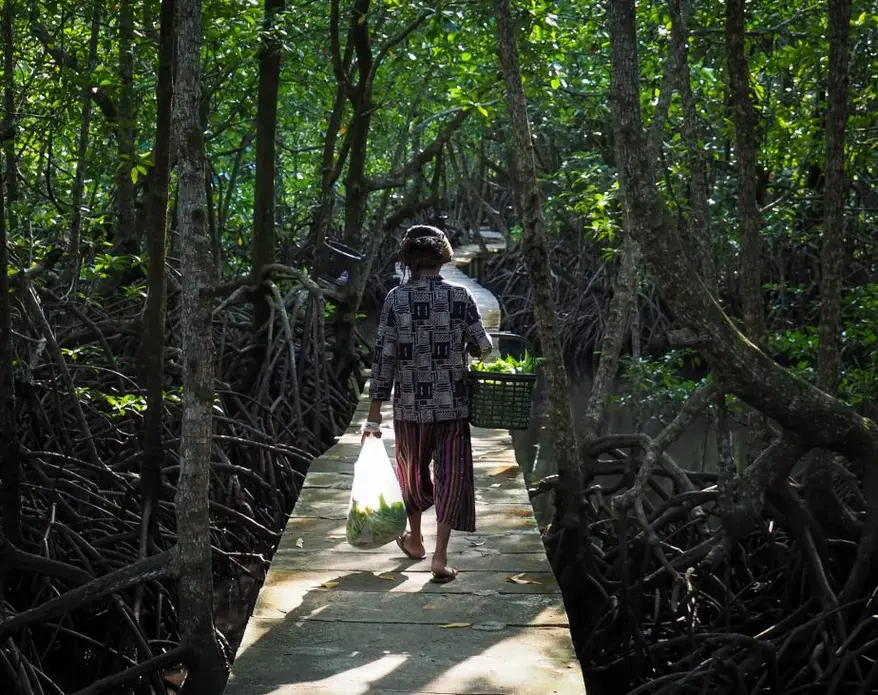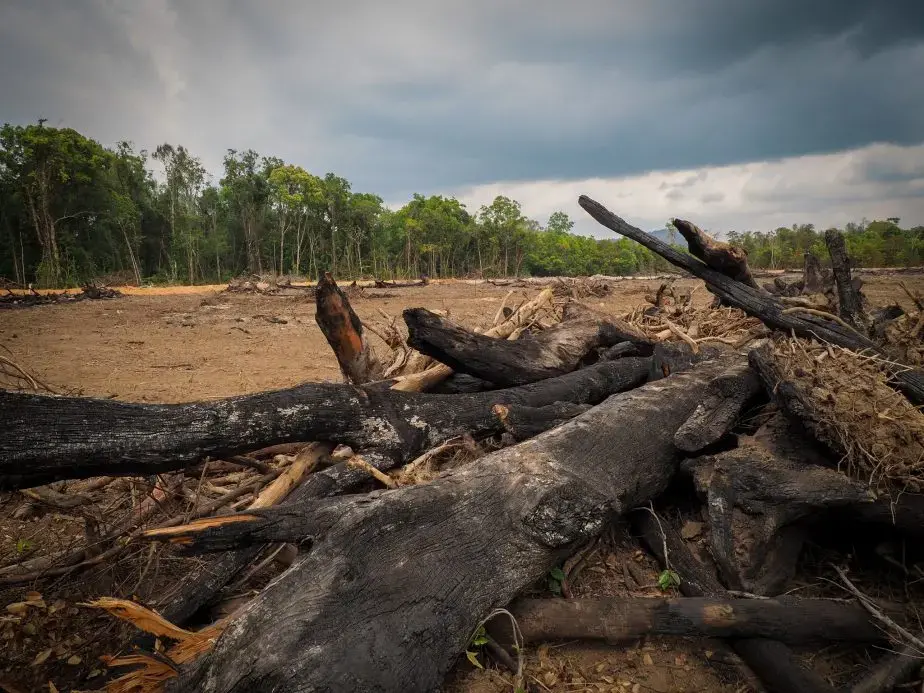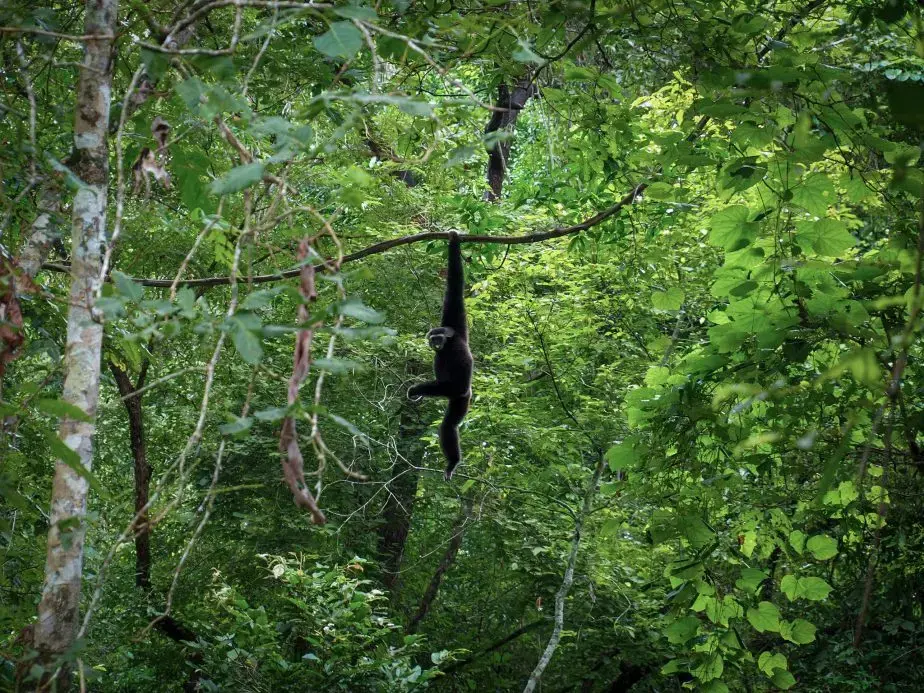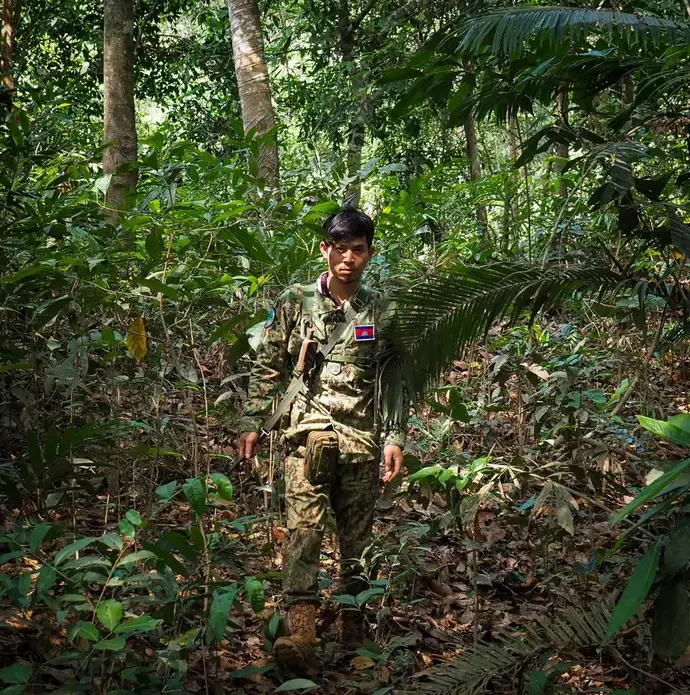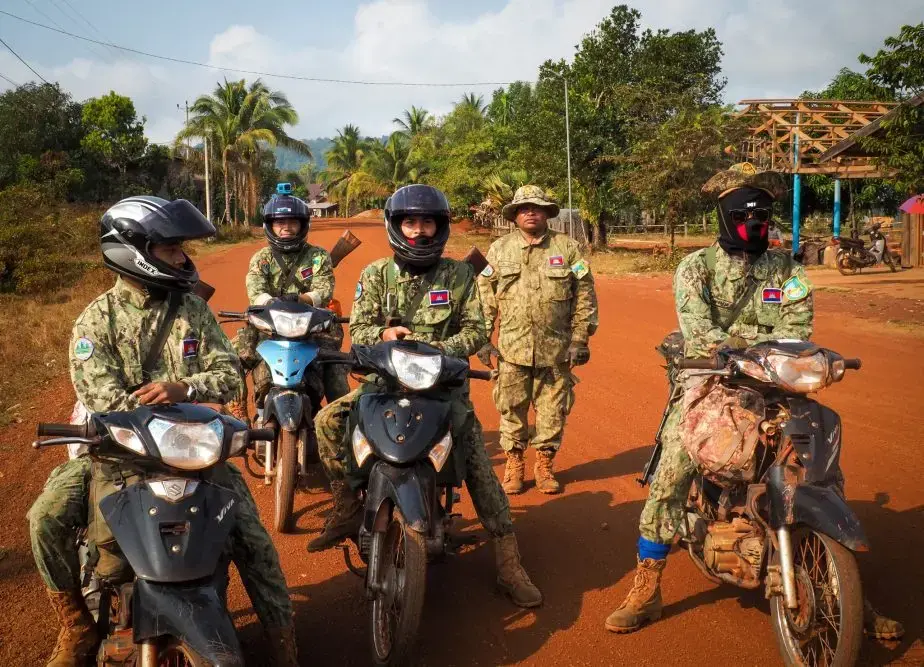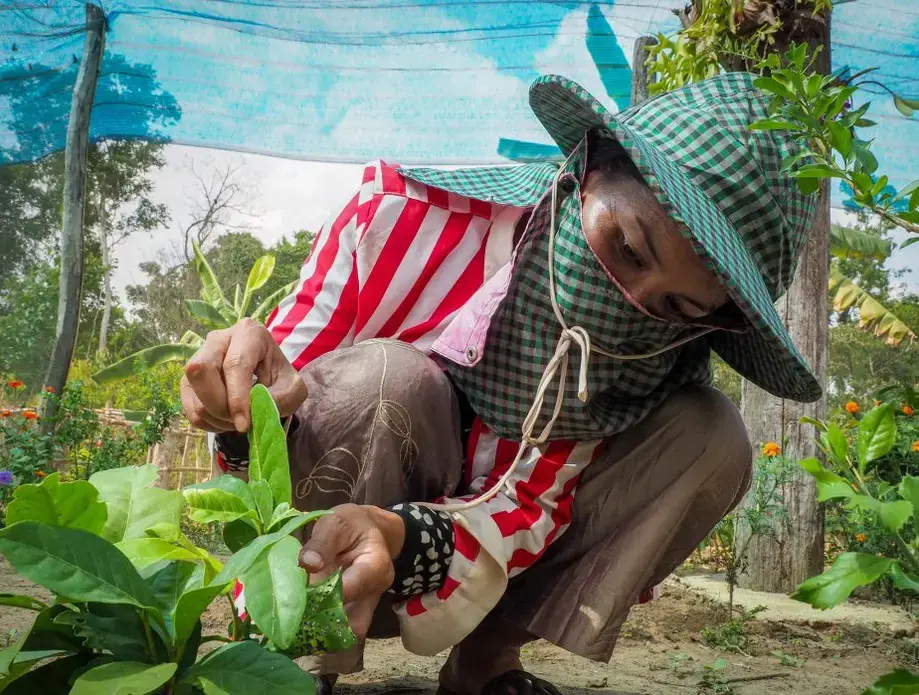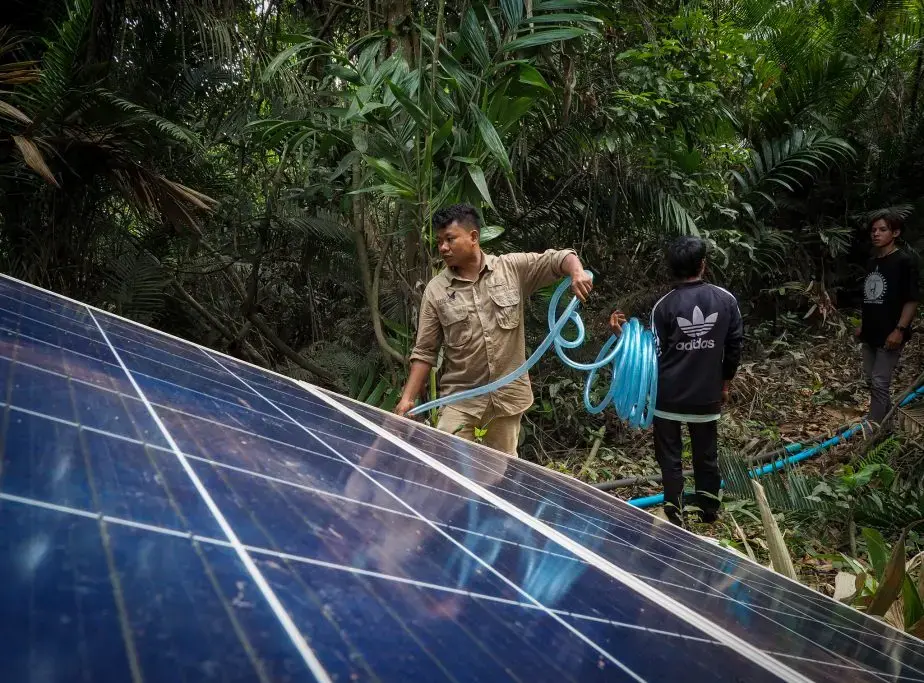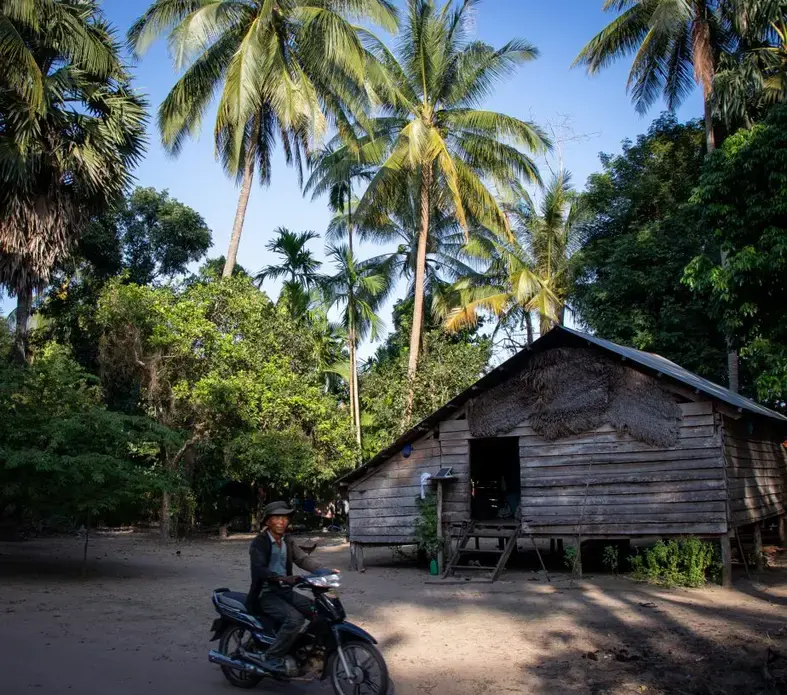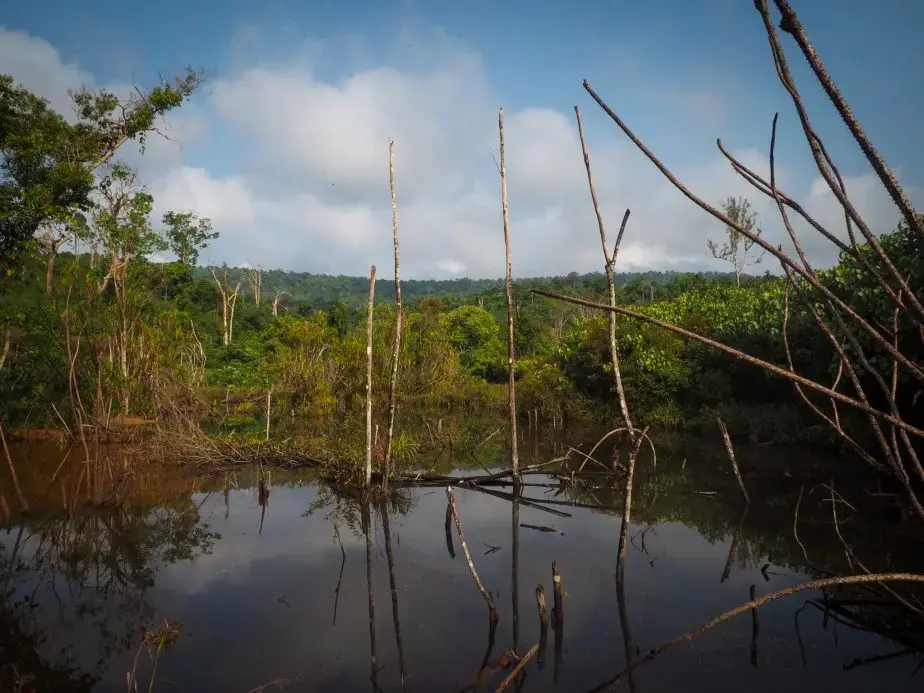Peng Sovannarin, the law enforcement coordinator at the international NGO Conservation International, has spent decades patrolling the rainforests of the Cardamom Mountains in southwestern Cambodia. Previously working as a park ranger, he now provides technical support to the government ranger team charged with defending the huge area of protected forest in the Central Cardamom Mountains National Park.
Despite decades of work in the forest, Sovannarin admits that illegal poaching and logging operations are still common throughout the protected areas, despite the longstanding efforts of the local community, NGOs, and certain government bodies to prevent such activities.
Last month, park rangers confiscated over 600 snares in one outpost area of the Central Cardamom Mountains alone.
“This scale of poaching means it is not just a local problem. We know there is an extensive network in place to trade the endangered animals and luxury timber found in the forest,” said Sovannarin. “The locals we are catching actually understand the need to protect the forest, but the pressure of poverty often forces them into making bad decisions and entering the forest anyway.”
The Cardamom Mountains in southern Cambodia are the second largest virgin rainforest in Southeast Asia, consisting of over 800,000 hectares of dense monsoon and mangrove forest. The area is home to at least 60 endangered wildlife species, including Asian elephants, Siamese crocodiles, sun bears, gibbons, and pangolins.
The burden for the protection of this biodiverse rainforest has fallen on grassroots community groups and environmental organizations, who labor to prevent the illegal land grabbing, deforestation, and wildlife poaching that have for many years been stripping this forest of its natural resources.
The forests of the Cardamom Mountains are also home to thousands of villagers who, after years of land grabbing and agricultural development by the local population, have blurred the lines between where the protected forest ends and the lands of local communities begin. With 16 percent of people living below the poverty line in the most remote areas, the lure of the income that can be earned from selling high value timber or endangered animals is too great for some to ignore, especially given the additional economic burdens imposed by the COVID-19 pandemic.
To prevent illegal logging and poaching, organizations like Conservation International are working with the local community to develop alternative livelihoods, like lemongrass oil production, eco-tourism projects, and butterfly farming.
Local farmer Suon Sareth began breeding butterflies in 2019, seeing it as a unique opportunity to make a living while positively impacting the forest. Today, her farm has helped to strengthen the local butterfly population and provide an alternative source of income for the local people, drawing them away from environmentally harmful activities. The farmers can sell the excess of butterfly pupa to the Banteay Srey Butterfly Center in Siem Reap. The project managers later release the butterflies throughout forests in Cambodia. Sareth hopes to help create more butterfly farms in the area to bring life back to the forest.
“We know when the forest is healthy, the people are healthy,” said Sareth. “The butterflies are showing my community how we can live harmoniously with the environment again.”
Ventures like butterfly farming are more sustainable than the timber and plantation projects commonly seen throughout the Cardamoms. Often the result of illegal land grabbing, these large-scale agriculture schemes remain a major threat to the eight protected forest areas of the Cardamom Mountains.
According to Global Forest Watch, more than 148,000 hectares – or 8.6 percent – of tree cover was lost in the Cardamoms between 2001 and 2019. Illegal land clearing has taken place due to the difficulty in enforcing land ownership laws over such a large land mass. Meanwhile, an increase in the granting of land concessions by the Cambodian authorities is enabling timber and plantation companies to clear protected forest.
The Southern Cardamom REDD+ Project is making further attempts to prevent land grabbing by demarcating protected forest, replanting already cleared land with native trees, and expanding sustainable agriculture and community-based ecotourism with local and indigenous communities. The project protects 497,000 hectares of tropical rainforest, preventing more than 3 million tons of carbon emissions each year – the equivalent of one fifth of Cambodia’s annual CO2 emissions.
Suwanna Gauntlett, the CEO of Wildlife Alliance, the organization that is managing the REDD+ Project, said many people were taking advantage of the situation to grab and clear forest before the project officially creates the protected forest zone. Today, her team meets regularly with local authorities in a bid to prevent land concessions being granted to private investors.
“Often the land grabbing is done by politically connected people. We are trying to build the political will of the local authorities so they do not allow state forest to be given away, because this forest is now clearly inside protected areas under the jurisdiction of the Ministry of Environment,” said Gauntlett. “This means we maintain a presence on site to provide assistance when working with the authorities is needed.”
Commitment to protect the Cardamom Mountains is growing, with a recent $50 million investment from the World Bank aimed at improving the management of protected areas and promoting ecotourism opportunities in the area. Adding this level of investment to the ongoing grassroots conservation efforts of local communities and the growing support of environmental organizations, the protection of the Cardamom Mountains has the potential to provide cover for a project of effective rainforest restoration, something not often seen in Southeast Asia.
“After decades of industrial and agricultural development, we are trying to shift Cambodia’s focus away from purely economic expansion to also include forest protection and conservation, so everyone involved can benefit from a healthy environment including, most importantly, the forest itself,” said Sovannarin.
- View this story on Climate Tracker





